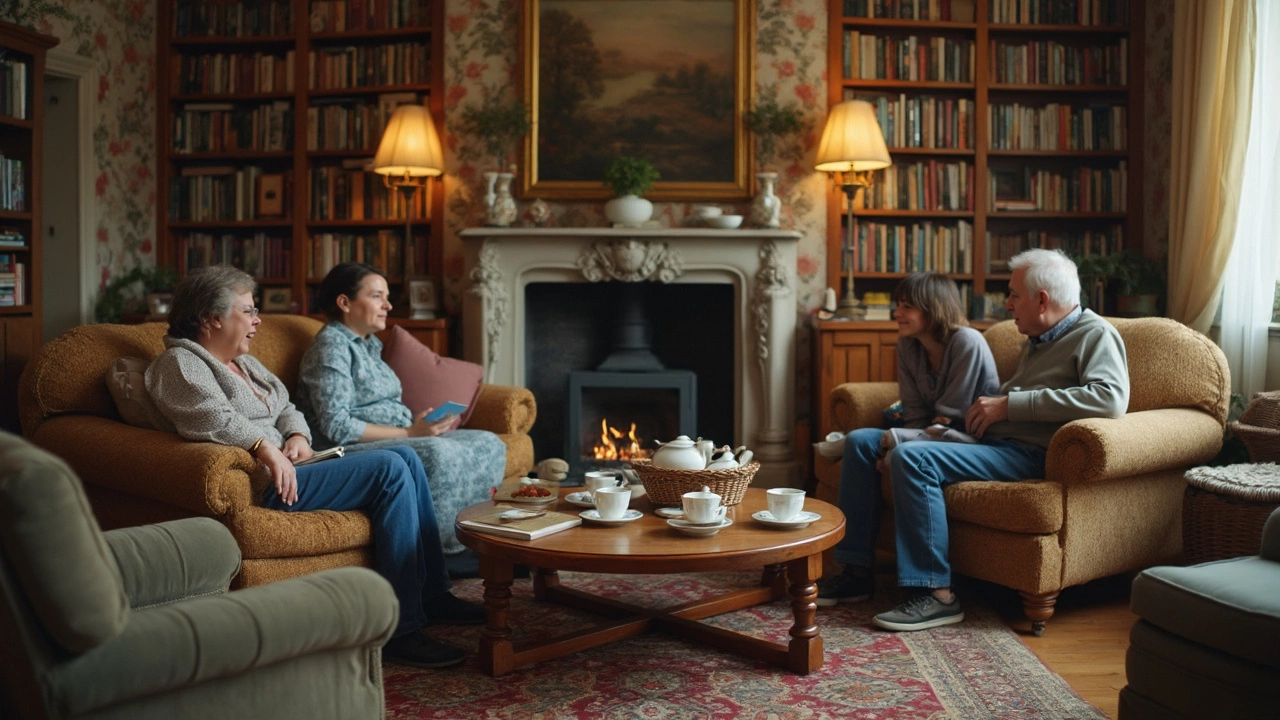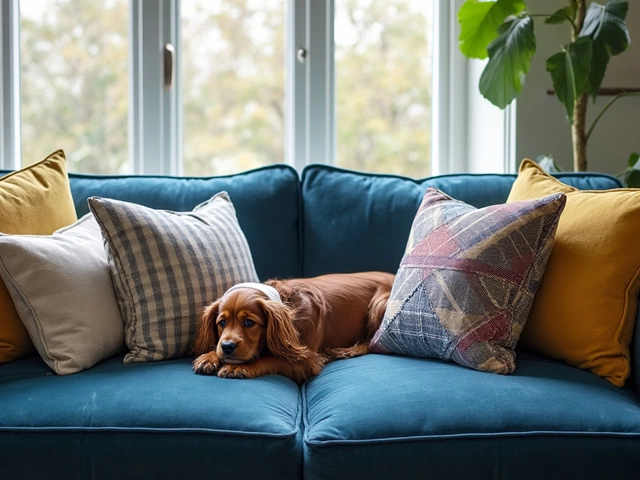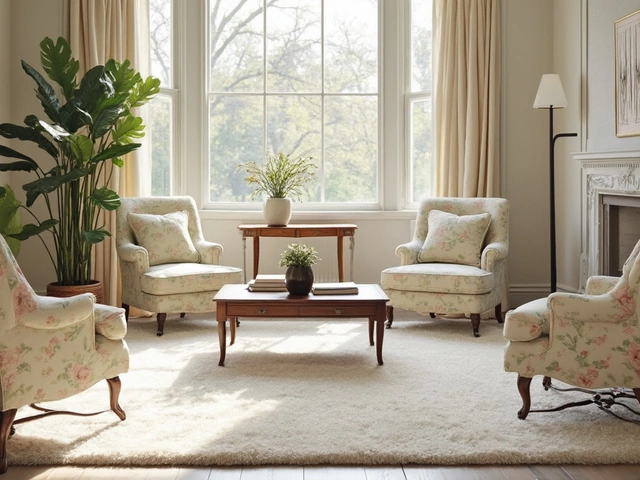Ever walked into a store, sat on a gorgeous sofa, flipped over the price tag, and nearly choked on your own excitement? We’ve all been there. Sofas are often the priciest thing in the living room, and the price swings are wild. You’ll see everything from budget couches that cost less than a night out, to luxury pieces that look like they need their own insurance policy. So, does coughing up a small fortune actually get you something better?
Let’s get practical. The right sofa isn’t just about looks—it battles pets, toddlers, pizza nights, and those rare moments when you actually nap like you promised yourself you would. If you choose wrong, you might end up with sagging cushions, mystery squeaks, and fabric that’s seen better days (all in a couple years). But go too fancy, and you might waste money on features you’ll never use or styles that fall out of favor before the cushions even soften up. If you’re trying to figure out where your money is best spent, you’re definitely not alone. Let’s break down what you really get for your cash—and whether it’s ever worth going big on a sofa.
- The Real Cost of a Sofa
- What Makes a Sofa Expensive?
- How to Tell If a Sofa Is Worth It
- Tips for Smarter Sofa Shopping
- When to Save and When to Splurge
The Real Cost of a Sofa
Here’s something people don’t talk about enough: the sticker price on a sofa is just part of the story. Buying the cheapest sofa can turn into a money pit if you have to replace it in a year or pay someone to fix snapped springs. On the other hand, paying more up front for better construction or materials could save you headaches (and cash) in the long run.
Want some real numbers? The average American spends anywhere from $400 to $2,500 on a new couch, but the cost range is massive. IKEA’s budget sofas start under $300, while designer brands can top $5,000 easily. The lifespan varies about as much as the price—the cheapest sofas sometimes last only 3 to 5 years, while pricier ones can go strong for 15 years or more.
| Sofa Type | Average Price | Expected Lifespan |
|---|---|---|
| Budget (big box store) | $300–$700 | 3–5 years |
| Mid-range (chain furniture store) | $800–$2,000 | 7–10 years |
| High-end (designer/quality custom) | $2,500+ | 12–20 years |
But price alone doesn’t guarantee comfort or durability. Sometimes you’re paying extra for the brand name or the latest trend. What really drives the cost and lifespan is the stuff you don’t see right away, like the type of frame, the density of the foam, the quality of the springs, or the fabric toughness. A cheap plywood frame will sag or wobble much faster than a kiln-dried hardwood one, while low-density foam flattens in months.
Don’t forget about hidden costs. Replacement slipcovers, pro cleaning, and delivery fees add up quick. Upgrading to stain-resistant fabric? That adds bucks, too. Buying online might save you some cash, but you’ll have to handle returns or deal with assembly yourself. Even things like whether the sofa fits through your door could turn into extra charges if you’re not careful.
In short, the real cost of a sofa isn’t just what you hand over at checkout. It’s a mix of how long it lasts, what maintenance it needs, and all those little extras. If you’re shopping for your next sofa, start thinking about the whole picture, not just the sticker shock.
What Makes a Sofa Expensive?
The price tag on a sofa isn’t just about brand hype or that Instagram-famous fabric. There’s real stuff going on under those cushions that can send costs way up—or keep things budget-friendly.
The biggest thing? Materials. Look at what’s inside and outside. High-end sofas usually use solid hardwood frames like oak or beech. Cheaper couches might use softer wood, particleboard, or even plastic—none of which hold up as long. For the seating, pricier sofas often feature coil spring systems and high-density foam or even feather-filled cushions. The cheap stuff? Thin poly-fill or low-density foam that flattens out within a year or two.
Next up, fabric and leather choices. Natural fabrics, like linen, cotton, or leather, cost more than synthetic stuff like polyester. Real leather hikes up the price quickly, but it actually gets better with age, while faux kinds can crack and wear fast. Special features (like stain-resistant coatings or pet-friendly textiles) add to the bill but make life easier if you’ve got kids, pets, or a lot of dinner parties.
Handmade or custom pieces also bump up the price. Factory-made sofas take less time and have fewer personal touches, but a custom couch is all about details—think hand-tied springs, precise stitching, and corner blocks for extra strength. All these things eat up time and wages.
Want some numbers? Here’s a quick breakdown:
| Feature | Budget Sofa | Mid-Range Sofa | High-End Sofa |
|---|---|---|---|
| Frame Material | Plywood, particleboard | Pine, engineered hardwood | Solid hardwood (oak, beech) |
| Cushion Filling | Low-density foam | Mix of foam and fiber | High-density foam, feathers, springs |
| Upholstery | Synthetic fabric | Blended, fake leather | Real leather, linen, wool |
| Craftsmanship | Mass-produced | Partly handmade | Custom, hand-finished |
| Typical Lifespan | 2–5 years | 6–10 years | 15+ years |
Sometimes, you’re also paying for design and reputation. Well-known brands charge more, but you might get better customer service or warranties, which can save headaches later on.
Bottom line: When it comes to your sofa, expensive usually really does mean higher-quality bones, better fabrics, and craftsmanship that should last a decade or more if you treat it right.

How to Tell If a Sofa Is Worth It
Spotting a good sofa isn’t rocket science, but you’ll want to look at a few real details before you drop hundreds—or thousands. Forget the sales pitch for a minute and check these things in person if you can. Pictures can be sneaky.
Sofa frames are the biggest deal-breaker for durability. Solid hardwood like kiln-dried oak, maple, or ash means the frame won’t wiggle apart or snap under stress. Watch out for plywood or particle board—those tend to warp or break faster. If possible, pick up a corner and wiggle it; a sturdy frame should barely flex.
Pay attention to joinery. Staples and glue only? Probably a weak spot. Look for dowels, screws, or metal brackets. These keep things tight for years. Next up: check the suspension. Eight-way hand-tied springs are old-school and super sturdy, but S-springs or even webbing can be fine in cheaper models—just make sure they’re not loose.
The fill matters for both comfort and how long the chunkiness lasts. High-resiliency foam, inner coils, or a mix with down keeps things comfy and not flat after constant use. Cheap poly-fill turns to mush fast, especially if you binge-watch stuff a lot. Removable, zippered seat covers make cleaning easier, too.
Don’t forget the fabric. Polyester blends, microfibers, and leather are great for stains and families with kids or pets. Linen and velvet snag or stain faster. Some brands will put official wear ratings on upholstery—look for “35,000 double rubs” or higher for heavy home use.
Curious about how long sofas actually last at different price points? Here’s what you can expect:
| Sofa Price Range | Average Lifespan | Main Material |
|---|---|---|
| Below $500 | 2–3 years | Plywood, basic foam, polyester |
| $500–$1200 | 5–8 years | Mixed wood, high-density foam, synthetics |
| $1200–$3000 | 10–15 years | Solid hardwood, dense foam, premium fabrics |
The return policy and warranty also matter. A solid brand should give at least a 1-year warranty on structure. Also, take five minutes and check online reviews for sagging or tearing issues after a few years—they’re usually dead honest.
- Check the frame—hardwood and solid joinery are best.
- Look for high-quality cushioning (high-resiliency foam or coils).
- Go for durable, stain-resistant fabrics for busy households.
- Scan reviews for issues like sagging or frame breakage.
- Ask about warranties and how easy it is to clean or repair.
If a sofa hits most of these marks, it’s way more likely to last, look good, and actually feel worth what you paid.
Tips for Smarter Sofa Shopping
Shopping for a sofa isn’t as easy as picking the prettiest one on display. There’s a bunch of stuff that makes a difference in both comfort and how long the couch will last. Here’s what you should keep in mind so you actually get your money’s worth.
- Sit Before You Buy: Sounds obvious, but so many people skip it. Different brands use very different cushion fills and support systems. If it feels saggy or springy now, it’ll only get worse once it’s home.
- Check the Frame Material: Hardwood frames (think oak or beech) are sturdier and last way longer than ones made with particle board or cheap plywood. Don’t be afraid to ask what’s inside.
- Look at the Suspension System: Eight-way hand-tied springs usually signal top quality, but webbing or sinuous springs (the kind that look like long S’s) can also hold up well if done right. If you can feel the frame, that’s a red flag.
- See the Fabric Up Close: Durable fabrics like tightly woven linen, cotton, or microfiber stand up to messy hands and four-legged friends. Leather’s pricey upfront, but can last decades if you care for it. Don’t forget to ask about stain resistance, especially if you’ve got kids or pets.
- Measure Twice, Buy Once: Take stock of your living room (and your doorways!) before buying anything. A couch that won’t fit through your door is just an expensive problem.
- Read Return Policies: You might be surprised by how strict some stores are. Look for options that let you return or exchange the sofa if it doesn’t fit or doesn’t feel right once you live with it for a bit.
Here’s a cheat sheet comparing some popular sofa materials to help you zero in on what’s right for your space and budget:
| Material | Average Lifespan | Cost Range | Best For |
|---|---|---|---|
| Hardwood Frame + Fabric | 10–15 years | $800–$3,000 | Everyday use, families |
| Particle Board Frame + Fabric | 3–5 years | $200–$800 | Temporary setups, tight budgets |
| Leather (Top Grain) | 15–25 years | $1,500–$7,000 | Durability, easy cleaning |
| Performance Fabric | 8–12 years | $600–$2,500 | High-traffic homes, stain problems |
No need to get overwhelmed. Just focus on what matters most in your day-to-day life. Want something that lasts for the long haul? Spend a bit more on the frame and fabric. Buying for a college apartment? It’s totally fine to go cheaper. But whatever you do, don’t just buy for looks—buy for living.

When to Save and When to Splurge
This is where a lot of people get stuck: should you go for the cheapest option around, or is it smarter to spend bigger on the sofa of your dreams? Not every “investment piece” actually justifies its price, and not every budget sofa is a waste. Knowing what matters most for your home, habits, and budget can keep you from making a decision you'll regret.
Here’s the deal—splurging makes more sense if you plan to use the same sofa daily, you’ve got a busy household, or you want something that’ll last a decade or longer. If you’re moving soon, you’re furnishing a short-term rental, or you have a super limited budget, saving might be the way to go. No sofa is forever, but some clearly work harder than others.
- Sofa stays in a high-traffic space: Splurge. Cheap frames and cushions will break down way faster in places like the living room or family room. Solid hardwood frames and high-density foam can last up to 15 years, while cheaper particle board frames might start sagging in 2-3 years.
- Short-term use or light traffic: Save. If you're putting the sofa in a guest room or a rarely used den, a midrange couch could be perfectly fine without eating up your savings.
- Allergies or pets: Splurge. Easy-clean fabrics like leather or performance microfiber cost more but keep your life less stressful. Cheap fabric can trap allergens and look worn fast with pet claws.
- Trendy looks: Save. If you want a sofa in a fun color or style you might outgrow in a few years, don’t pay top dollar. Trendy often means short shelf life.
If you want some numbers for context, check out how lifespans typically stack up by price:
| Price Range | Frame Material | Estimated Lifespan |
|---|---|---|
| $300-$600 | Particle board, plywood | 2-5 years |
| $700-$1,500 | Solid wood, plywood mix | 7-10 years |
| $2,000+ | Solid hardwood, premium foam | 12-20 years |
It makes sense to invest more in your main couch if it’s central to your day-to-day life. But for spare rooms or starter apartments, don’t let the high-end price tags fool you—sometimes, saving is just the smarter move. And remember, spending more won't fix a bad fit or a style you hate, so put comfort and real-life needs first every time.







